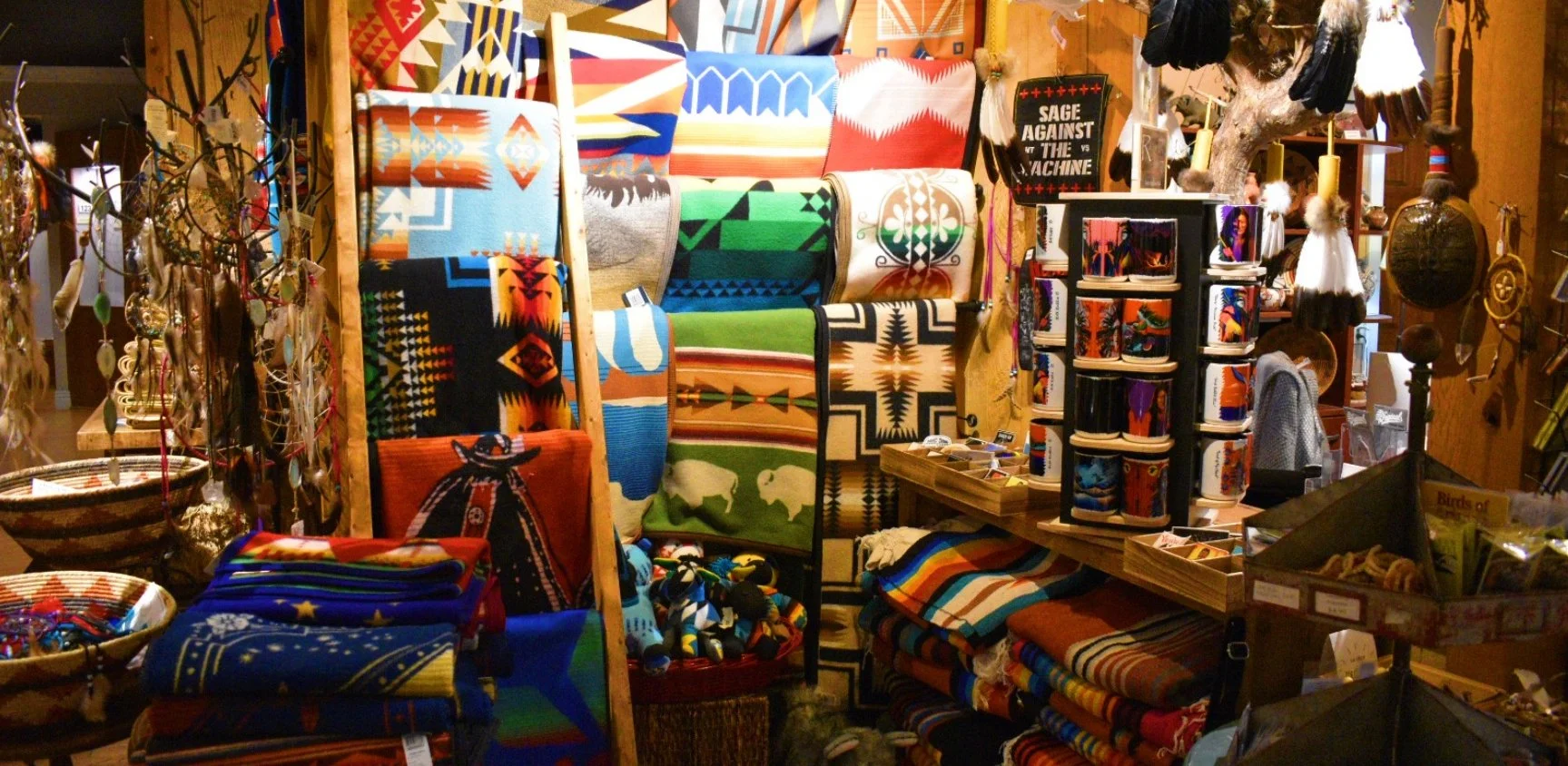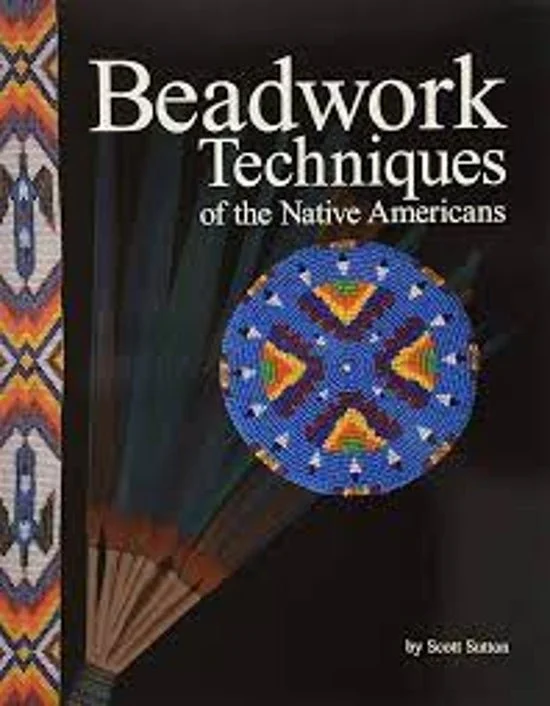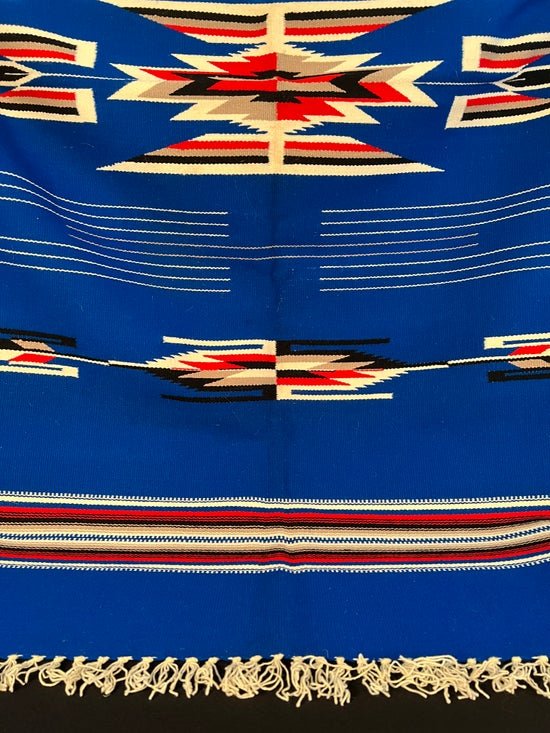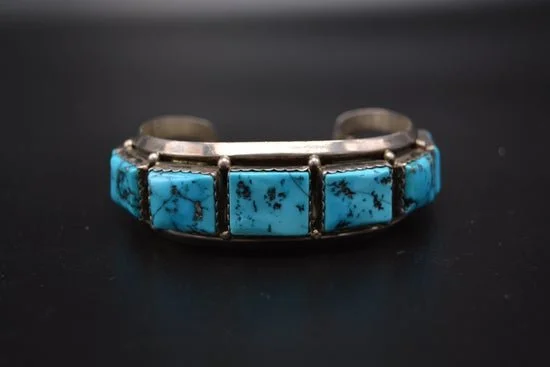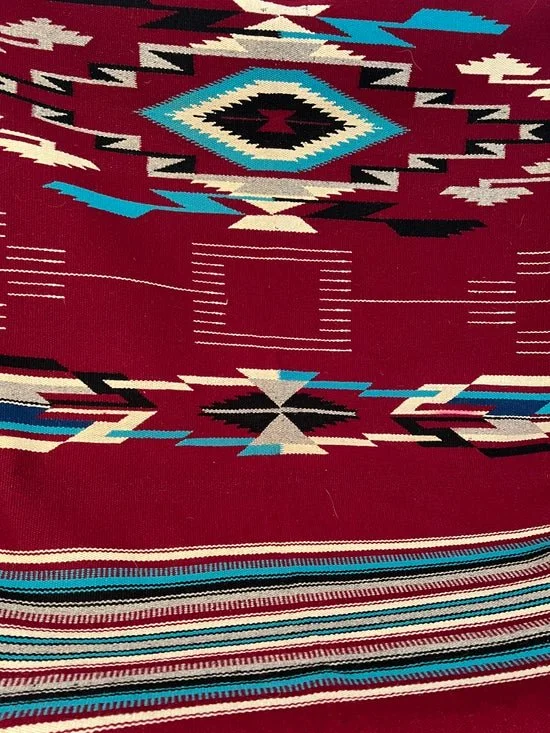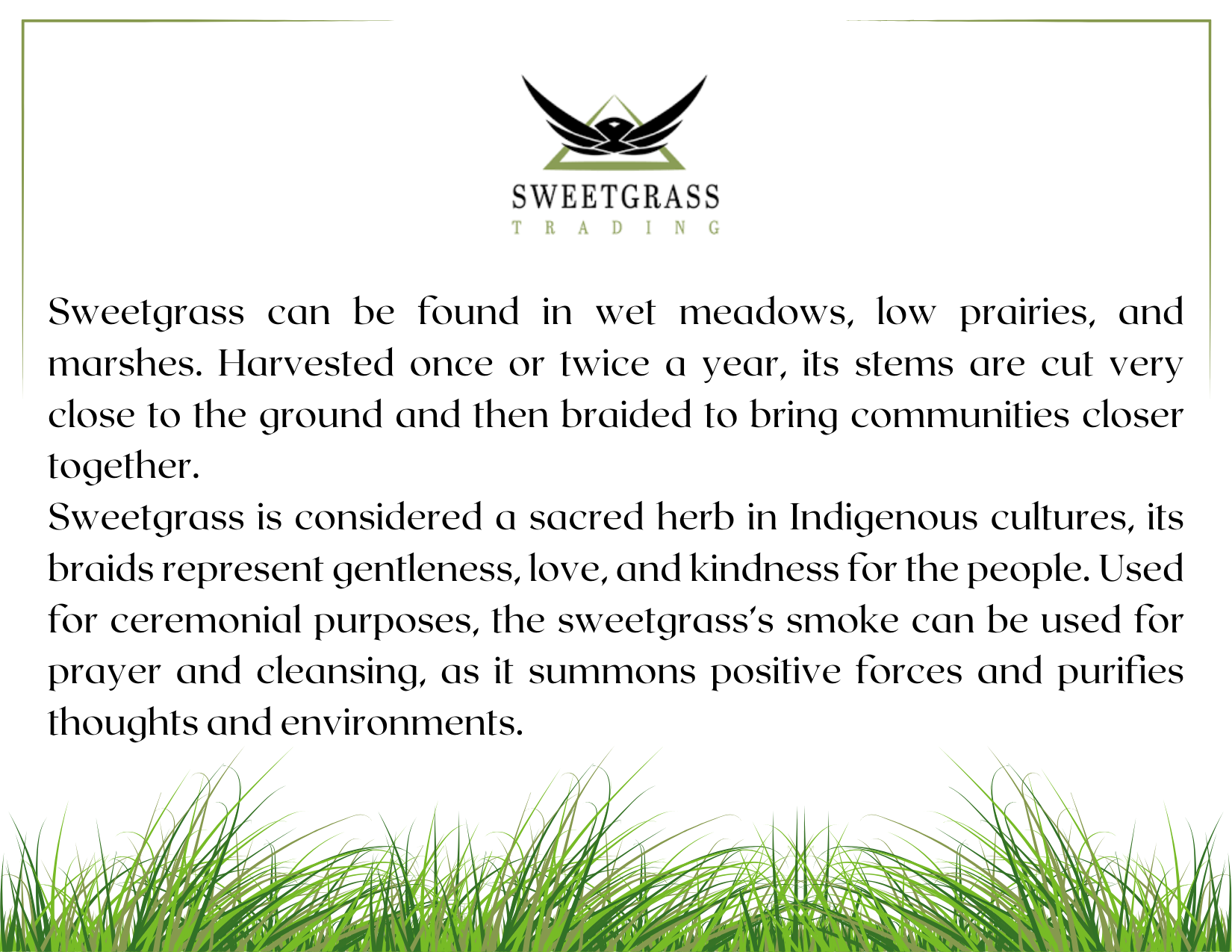The Trading Post
Our Museum Shop Story
Step into the MONAH Shop, where the echoes of 26,000 years of indigenous history whisper through every artifact and artwork. Nestled within the Native American History Museum, it's not just a shop but a bridge between the past and the present, seamlessly connecting visitors with the vibrant narratives of contemporary indigenous communities.
As you enter, you're embraced by a collection meticulously curated to showcase the enduring creativity, resilience, and innovation of indigenous peoples. Each piece tells a story, weaving together tradition and modernity into a tapestry of cultural heritage.
Traditional crafts passed down through generations—pottery, beadwork, and woven textiles—adorn the shelves, embodying centuries of craftsmanship and artistic expression. These treasures not only celebrate indigenous culture but also honor the legacy of those who have kept these traditions alive.
Yet, the MONAH Shop is not bound by tradition alone. It's a canvas for contemporary indigenous artists to paint their narratives, with paintings, sculptures, and mixed media works that speak to the evolving cultural identity and artistic vision of indigenous communities.
As you explore, interactive displays and informative plaques beckon you to delve deeper, offering insights into the inspirations, techniques, and cultural significance behind each masterpiece. It's more than just shopping; it's a journey of discovery and understanding.
But the MONAH Shop is more than art—it's a lifeline for indigenous-owned businesses, offering a platform for their textiles, home goods, and more to thrive. By supporting these enterprises, visitors become part of a legacy of economic empowerment and sustainability, forging connections that transcend museum walls.
In essence, the MONAH Shop is an extension of the museum experience, inviting visitors to engage with indigenous culture in a tangible and meaningful way. It's a celebration of resilience, creativity, and cultural vitality—a testament to the enduring spirit of indigenous communities across the Americas.
Take a Peek Inside our Shop.
Find a Treasure of your own to take home.
Featured Artists
Resources and Artist Information in Afro-Indigenous History
Look for this book in the MONAH Shop soon!
Frequently Asked Questions
A Short History of Native American Kachinas
Hopi Kachina dolls are not just decorative objects but serve as important educational tools for Hopi children to learn about their rich cultural and spiritual traditions. These carved wooden figures represent Hopi spirits or deities and were traditionally gifted to children to help them understand the different Kachinas and the stories and cultural significance attached to them. While these dolls have become highly admired and collected by many outside the Hopi community, their primary purpose is to pass down the Hopi's cultural heritage to the next generation.
What is a Kachina Doll?
Kachina dolls, also called Katsina by the Hopi language, are carved wooden figures that represent the Kachina spirits in Hopi and other Pueblo cultures. These spirits are believed to live on the San Francisco Peaks near Flagstaff, Arizona, and are central to Hopi religion and culture.
Traditionally, Hopi men would impersonate the Kachina spirits by wearing masks and dancing in the village plazas during ceremonies that take place between the Winter Solstice and mid-July. The carved Kachina dolls were then gifted to Hopi children to teach them about these important spiritual beings and the associated cultural traditions.
Over time, the art of Kachina doll carving has evolved from simple, block-like figures to highly detailed, lifelike sculptures. While the dolls were originally meant as educational tools for Hopi children, they have also become prized as impressive works of art, with known carvers developing various styles and forms.
Today, Kachina dolls continue to hold great cultural and spiritual significance for the Hopi people, while also being widely appreciated and collected by those outside the Hopi community.
Techniques and History of Native American Pottery
Indigenous pottery making traditionally started using hand-coiling and pinching techniques, rather than pottery wheels. Potters would gather clay from local deposits, often mixing it with tempers like sand, shell, or crushed stone to improve the clay's strength and durability.
Beyond the basic shaping, Native American potters developed a variety of decorative techniques to adorn their wares. This included incising, punctuating, and engraving designs into wet or dried clay. Potters would also apply colored slips, made from local mineral pigments, to create vibrant polychrome patterns. The finished pieces were then fired in open-air pits or kilns, with the firing process carefully controlled to achieve desired effects like the distinctive black ware of the San Ildefonso and Santa Clara Pueblos.
Acoma Pottery
The Acoma Pueblo people are known for their distinctive black-on-white pottery, which features intricate geometric designs and patterns. The pottery is made using traditional coil-and-scrape techniques, and the designs often depict elements from the Acoma spiritual beliefs. The pottery serves both utilitarian and ceremonial purposes within the Acoma community.
The Acoma have been creating pottery for over 1,000 years, with the earliest known pieces dating back to the 12th century. The pottery-making tradition is deeply ingrained in Acoma culture, with skills passed down through generations of women potters. The distinctive black-on-white designs are created by applying a white slip to the clay surface and then painting intricate patterns using a black mineral pigment. This technique requires great skill and precision, as the designs must be carefully planned and executed.
Acoma pottery holds immense cultural significance for the tribe, serving as a means of preserving their history, beliefs, and connection to the land. The pottery is used in various ceremonial and religious practices, and the designs often symbolize important elements of Acoma cosmology and mythology.
Navajo Pottery
In contrast to the Acoma, the Navajo people are more renowned for their woven textiles and rugs rather than pottery. However, Navajo pottery does exist and is characterized by more organic, naturalistic designs that draw inspiration from the Navajo's deep connection to the land and their stories of creation. The pottery is often decorated with symbols and motifs that hold spiritual significance for the Navajo people.
The Navajo pottery tradition is relatively recent, with the earliest known pieces dating back to the late 19th century. Unlike the Acoma, the Navajo did not have a long-standing pottery-making culture, and the art form was likely influenced by interactions with other neighboring tribes. Despite this, Navajo potters have developed their own distinct aesthetic, incorporating elements from their weaving traditions and natural imagery and symbols into their designs.
Mata Ortiz Pottery
The Mata Ortiz pottery tradition emerged in the 20th century in the small Mexican town of the same name. While influenced by ancient Casas Grandes pottery, the Mata Ortiz style has developed its own distinct aesthetic, featuring bold geometric patterns, animal imagery, and abstract designs. The pottery is seen as a way for the Mata Ortiz community to preserve and express their cultural identity.
The Mata Ortiz pottery tradition was revived in the 1970s by a local artist named Juan Quezada, who rediscovered the techniques and designs of the ancient Casas Grandes culture. Quezada's innovative approach to pottery-making, which combined traditional methods with his own creative flair, inspired a renaissance of the art form within the Mata Ortiz community.
Today, Mata Ortiz pottery is highly sought after by collectors and art enthusiasts around the world. The pottery's distinctive designs and forms reflect the Mata Ortiz community's rich cultural heritage and their ongoing efforts to preserve their artistic traditions.
Santa Clara Pottery
The Santa Clara Pueblo is renowned for its distinctive black finish dating back centuries, with the earliest known pieces dating to the 13th century. The pottery-making process is a highly skilled and labor-intensive endeavor, involving the careful selection and preparation of clay, the shaping of the vessels, and the application of intricate designs and finishes. The distinctive black and matte coloration of Santa Clara pottery is achieved through a complex carving process that started in the 1920’s.
Across these diverse Southwestern tribes, the creation of pottery and other artworks is intrinsically linked to the tribes' unique histories, spiritual beliefs, and connections to the land. While the specific designs, techniques, and artistic expressions may vary, the underlying purpose of these artworks is to preserve and transmit the cultural heritage and identity of each tribe to future generations.
The Spiritual Significance of Turquoise
Turquoise is revered as a "living stone" that serves as a bridge between the earth and the heavens. Its vibrant blue-green hues are believed to symbolize life-giving water and the natural world, imbuing the stone with powerful spiritual properties:
- Connection to the Earth and Sky: Turquoise represents the balance and harmony between the earthly and celestial realms.
- Healing and Protection: The stone is associated with healing, cleansing, and warding off negative energies and evil spirits.
- Ceremonial Significance: Turquoise is frequently incorporated into religious rituals, ceremonies, and cultural practices, serving as a conduit to the spiritual realm.
Where do we get our jewelry from?
Our jewelry comes from private vendors who partner with Native American artists and conduct business on their behalf. We also have the privilege of buying directly from Native artists as well.
Our giftshop also partners with Indigenous artists on consignment. Meaning a large portion of proceeds go directly to the artist/business and a fraction goes to our museum.
Importance of Ethical Partnerships:
The search results emphasize the importance of establishing ethical and authentic partnerships between businesses and Indigenous cultural artists/entrepreneurs. This involves respecting the cultural significance of the artwork, promoting true collaboration, and ensuring mutually beneficial arrangements.
MONAH's Local Indigenous Partnerships:
MONAH's consignment model primarily involves collaborating with local Native artists affiliated with tribes near Arkansas, such as the Osage, Choctaw, and Cherokee. This allows MONAH to support small Indigenous business owners and artists within the community.
Educating Consumers:
It is crucial for MONAH to clearly communicate to its consumers that the Indigenous artwork and crafts are sourced directly from the artists themselves or approved vendors, rather than through exploitative or unethical means. This helps consumers understand the importance of supporting these small business owners and their cultural significance.
Respecting Cultural Sensitivities:
While MONAH is able to ethically partner with and sell the work of Indigenous artists, it is important to remain mindful of cultural sensitivities around the sharing of traditional knowledge and spiritual practices. MONAH should defer to the wishes of the artists and communities regarding the appropriate ways to present and discuss the artwork.
In summary, MONAH's approach of collaborating directly with local Native artists and business owners, and then educating its consumers about these ethical partnerships, is an excellent way to support Indigenous communities while also respecting cultural protocols and sensitivities.
For our consumers, please feel reassured that nothing in our gift shop will be for sale that is deemed inappropriate for non-native people to own, wear, or advertise. Indigenous jewelry and art provided for sale at MONAH is respectfully curated so that all are welcome to celebrate the Native artwork.

